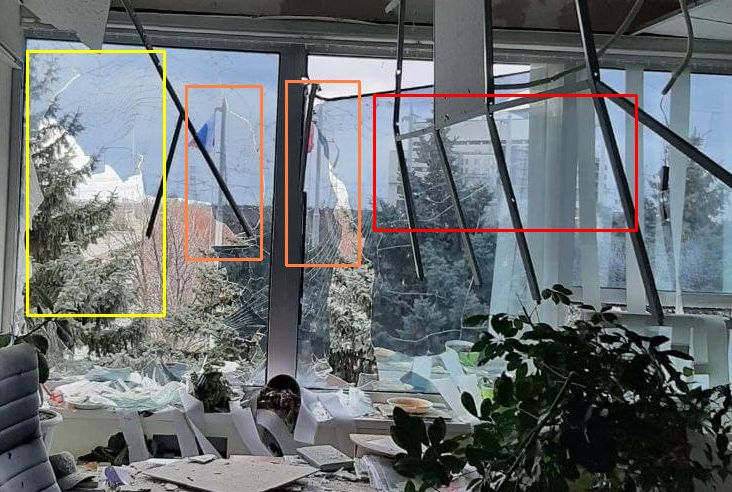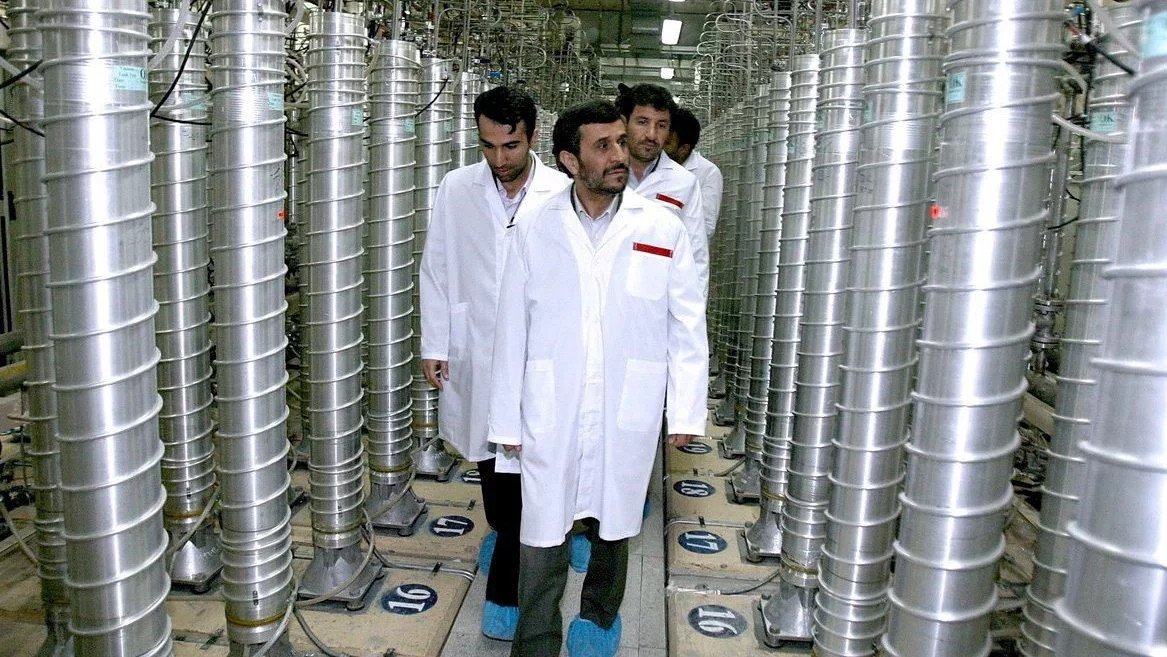Friday OSINT 🧵
Today we published an investigation into Russia's attack on the Zaporizhzhia Nuclear Plant. Behind the scenes there was a lot of geolocation. I'd like to tell you the story of one photo.
Here's how some Russian propaganda helped prove it was real. #ThanksRT!
Today we published an investigation into Russia's attack on the Zaporizhzhia Nuclear Plant. Behind the scenes there was a lot of geolocation. I'd like to tell you the story of one photo.
Here's how some Russian propaganda helped prove it was real. #ThanksRT!
So this is the photo. It's of a damaged office at the plant. I can say with confidence it is located at precisely 47.506689, 34.584975 on the third floor of the main administration building at the power plant. 

This geolocation isn't really all that tough. Particularly because the Ukrainians are VERY PROUD of their nuclear plant. To show it off, they even set up a 3D virtual tour. Using features in the window, it's easy to line everything up, even the floor.






We also have some corroborating footage from the night of the assault that can explain why the damage was so extensive. In particular, video of Russian soldiers firing RPGs into this very building. There were 5 fired in total, and it took a lot of other damage too.
OK, so that's all fine and good. But wouldn't it be nice to CHRONOLOCATE this image? That is, to prove it was taken AFTER the assault? Well that's where RT comes in.
After the attack, they visited the plant (Pretty cheeky, calling it an "exclusive").
After the attack, they visited the plant (Pretty cheeky, calling it an "exclusive").
Now in RT's official state narrative, the only building damaged in the assault was the training center. They claimed was set on fire by Ukranian "infiltrators". #lies
They were very careful to crop out any other damage at the site, including at the main admin building.
They were very careful to crop out any other damage at the site, including at the main admin building.
But in another shot, they proudly showed some flags flying over the reactor. One was the Russian flag. The other was the Soviet "Victory Banner" from World War II (H/T @dex_eve and others for showing me that).
Now let's go back and look at the flags at that office. A little hard to make out the second one, but it's pretty clearly a red flag. I'd call it a good match.
And voila! We now now have located this photo in both space and time! Thanks a bunch RT!
BUT WAIT! There's a twist!


And voila! We now now have located this photo in both space and time! Thanks a bunch RT!
BUT WAIT! There's a twist!



That RT shot ISN'T in front of the main admin building. It's actually at a different part of the plant (pretty sure around: 47.5076, 34.5886].
Again, the power company's ever popular Youtube channel can verify that.

Again, the power company's ever popular Youtube channel can verify that.


Here's my hypothesis:
RT couldn't show the flags flying over the admin building, which they'd blasted to shreds the night before.
So the MOVED THEM! To get a triumphant victory shot of the plant that wouldn't show all the damage they'd done.

RT couldn't show the flags flying over the admin building, which they'd blasted to shreds the night before.
So the MOVED THEM! To get a triumphant victory shot of the plant that wouldn't show all the damage they'd done.


That's some speculation, but I'd like to think it might be true.
Anyway, thanks for reading to the end!
Anyway, thanks for reading to the end!
P.S. If you want to check out more about what actually happened (not the RT version) please read our story.
npr.org/2022/03/11/108…
npr.org/2022/03/11/108…
*CORRECTION! I think the office might be on the FOURTH floor.
Pride goeth before the fall.
Pride goeth before the fall.
• • •
Missing some Tweet in this thread? You can try to
force a refresh














